How to feed peppers with ammonia and is it possible
To water pepper, ammonia is often used due to the huge amount of nitrogen in alcohol (82%). Plants get nitrogen by feeding on nitrates. Roots can absorb nitrogen from manure, chicken droppings. Ammonia is a compound of ammonia with water, that is, ammonium nitrate.
Why do peppers need nitrogen
Pepper bushes intensively absorb nitrates, which are then converted into nitrogen. Nitrogen is needed by crops for intensive growth, greenery growth, chlorophyll production, it affects the flowering of bushes, that is, the quality of the grown fruits.
Bushes do not absorb ammonia very willingly, therefore, it is advised to use ammonia for novice gardeners - when feeding peppers with ammonia, the bushes will not be oversaturated with nitrogen.
Ammonia is an indispensable intermediate that occurs during the natural nitrogen cycle. Nitrogen is partially converted to ammonium simply in the fresh air, if there is moisture, without the help of any microorganisms. Because of this, feed crops with ammonia - this can have a greater effect than using organic matter, since intensive soil biosynthesis is required to obtain nitrates from organic matter.
In a small area that is actively used, there are usually few microorganisms in the ground. In this case, the peppers find it difficult to extract nitrogen from the soil, even if fertilized. You can change the composition of the earth by introducing humus, but this takes a lot of time and money. Process the peppers with ammonia, which will help the culture avoid stress, take root and give bountiful harvests, and many parasites will not appear on the site due to the use of fertilizers.
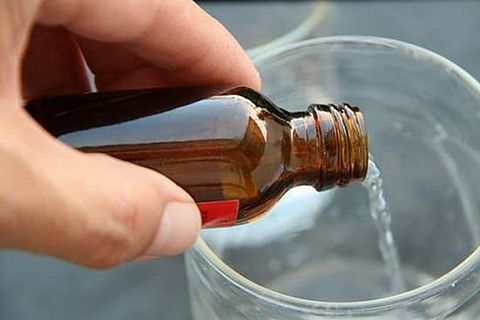
Ammonium is an alkali. Because of this, fertilization with ammonia together with organic fertilization prevents the appearance of soil with acidic characteristics. Lime is placed in the ground only if the soil has become acidic.
Precautions
Ammonia is toxic. A person inhales vapors, and ammonia can also enter the body through mucous membranes and skin. That is, when you decide to feed the peppers with ammonia, wear latex gloves, a plastic apron, a respirator for respiratory protection, glasses, a plastic cap. If there are any signs of poisoning (nausea, vomiting), drink warmed milk and call an ambulance.
In addition, ammonia vapors can damage various coatings, lead to discoloration of the wire insulation, and the appearance of cracks on the insulation. Salmon should be used very carefully. Use it in a greenhouse in the summer when the weather is warm with the frames open.
Ammonia as a top dressing
Water or spray crops by making a working solution.First, ammonia is diluted in water at a certain concentration, then the composition should stand for several minutes. Then it is poured under the root or on the leaves.
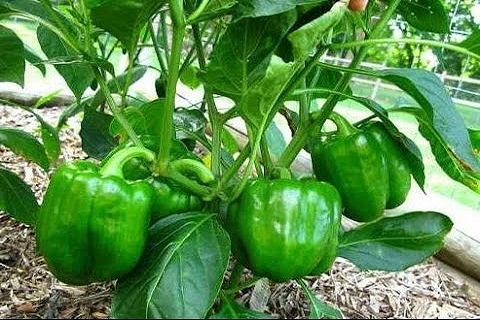
There are four options for the composition of the feeding:
- If you just want to feed the peppers, then pour in 3 tbsp. tablespoons of a 25% solution of ammonia in a ten-liter bucket of water. Pour under the roots of the peppers.
- To spray the bushes, pour 50 ml of the same composition into a ten-liter bucket of water.
- To feed newly emerged seedlings, pour 1 teaspoon of ammonia (25%) in 1 liter of water.
- The maximum dose for urgent watering of peppers when a lack of nitrogen is detected — 1 tbsp. spoon of 25% solution of ammonia in 1 liter of water.
Signs of a nitrogen deficiency:
- foliage becomes pale, turns yellow;
- leaves grow slowly, small in size;
- growth stops;
- inflorescences do not appear;
- thin and brittle stems.
Within 3 - 4 days after watering the land with this fertilizer, changes can be detected: the foliage becomes bright green, healthy and juicy. This is due to the saturation of the bushes with nitrogen and oxygen, photosynthesis becomes more intense, and the nutrition of the culture improves.
How to water pepper seedlings with ammonia
The containers in which the seeds are sown and the seedlings dive are washed with a solution of ammonia - this will prevent the appearance of ants and wasps, and prevent the occurrence of diseases.
14 days after picking seedlings or after the appearance of the fourth true leaf, make a solution of 1 teaspoon of 25% ammonia and 1 liter of water. You can do the processing of seedlings by pouring the composition at the root.

Water the seedlings from a watering can without a sprinkler. This is done by pouring a stream only under the roots, trying not to get on the leaves. To prevent burns on the plants, spray the seedlings with a misty stream of water after ammonia.
Top dressing and spraying on the leaves of the planted pepper
Pour in 3 tbsp. tablespoons of a 25% solution in a ten-liter bucket of water, water the seedlings at the root 3-4 days after planting the bushes on the site.
When inflorescences form, spray the bushes by pouring 50 ml of 25% ammonia solution into a ten-liter bucket of the purest water. Since ammonia is a volatile compound, spray the bushes with a watering can, which produces trickles with visible splashes. This is done in the evening after watering or in cloudy weather. Can be sprayed in the morning as soon as the sun rises. To spray large areas, switch the sprayer from fog to spray.
Ammonia from harmful insects
If the culture is attacked by a weevil, then dilute 50 ml of a 25% solution in a ten-liter bucket of water. You can water the Bulgarian pepper at the root every week, until the parasites are completely eliminated.
If the seedlings in the house are affected by fruit flies, pour once a solution of 1 teaspoon of ammonia (25%) in 1 liter of pure water.
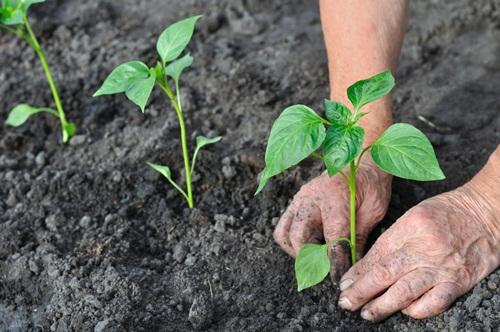
If you find a wireworm on peppers, pour 10 ml of 25% ammonia solution into a ten-liter bucket of water. Pour 0.5 liters per bush.
If the planting is attacked by aphids, then use ammonia from aphids - make the same solution as for wasps and ants, with soap. You can process the peppers 1 time. Grate 100-200 g of laundry soap (72%). Pour the grated soap into 1 liter of boiling water. Then pour the resulting soap solution in a thin stream into a bucket of plain water, stir until bubbles form. Pour 50 ml of a 25% solution of ammonia there. Sprinkle the peppers and the aphids will die. The composition scares off ants and wasps. If the plants are still affected by aphids, then after 14 days, repeat the spraying, again applying ammonia from the aphids, until all the aphids are dead.
The advantage of ammonia as a remedy for pests is that it absolutely does not pass through plant cells.But if, for example, aphids attacked plants at the stage of fruit pouring, and you sprayed the bushes, then you must thoroughly rinse them before using the processed peppers.
When feeding peppers with ammonia, do not forget about precautions. If you incorrectly calculate the required dose, you can harm the crop, which will further affect foliage and vegetables. If the dose of ammonia is too high, the peppers will get a watery taste and will not have the characteristic aroma of ripe fruits. Excessive application of ammonia will have a bad effect on the health of a person who will eat pepper.
Fertilizing a culture with ammonia is possible and necessary. But remember that it is necessary to correctly calculate the dose of ammonia, taking into account the abundance of flowering, the size and age of the culture.

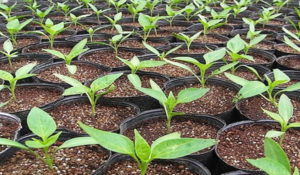


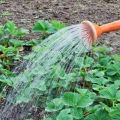
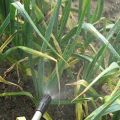
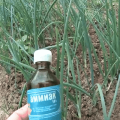

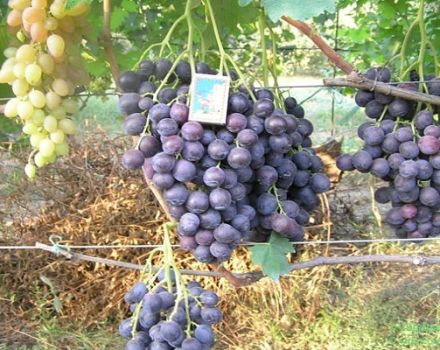
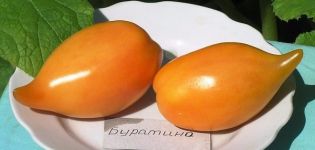
Now a huge number of products are sold that are much more effective than ammonia. This is not the first year I have been buyingBioGrow”, It is well suited for pepper and other crops.